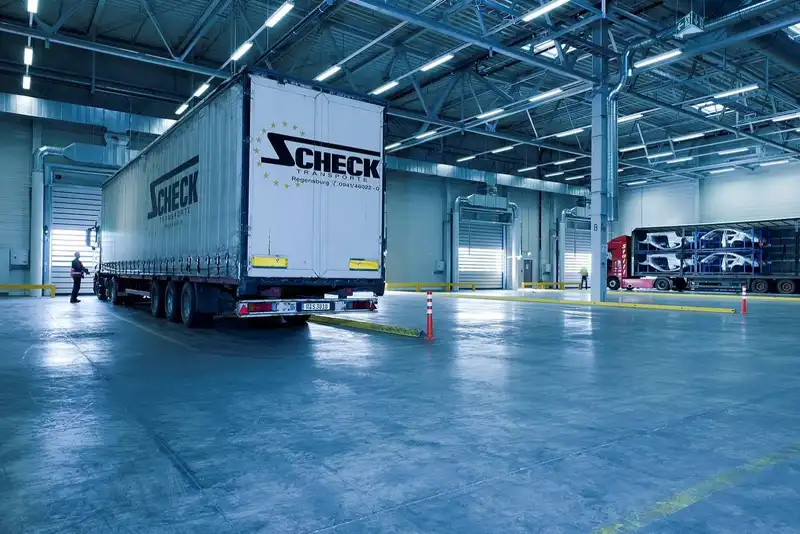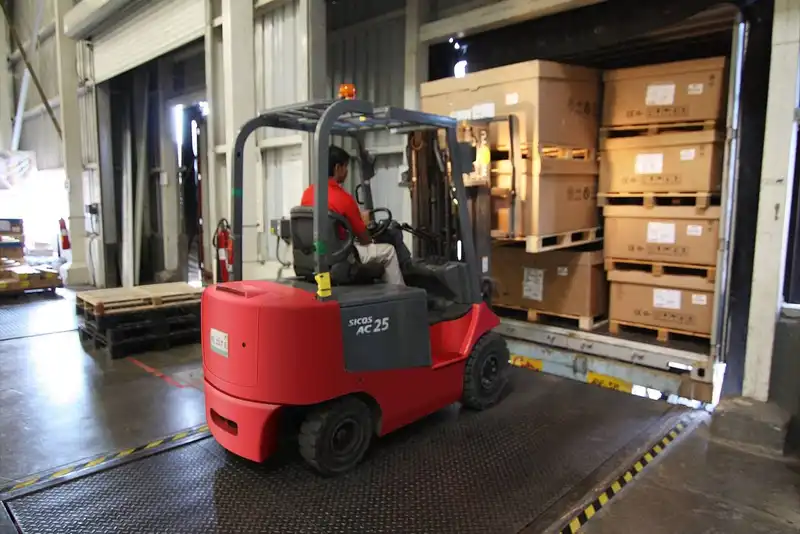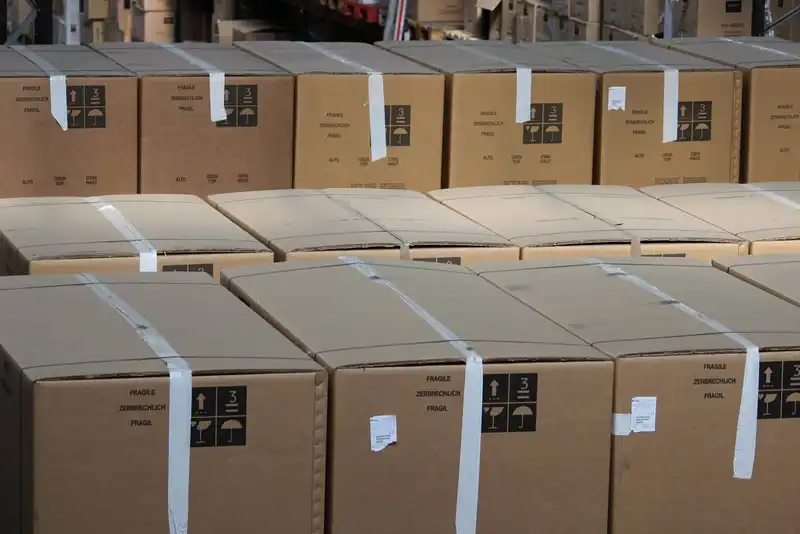Guide to Warehouse Safety- 7 Rules to Keep Staff Safe
A warehouse can be a complex space with many moving parts, which need to be closely monitored to ensure worker safety.
The combination of people, machines, and deadlines can create numerous warehouse safety hazards. To keep staff and stock safe it is vital to have a strategy to stay compliant with all regulations and create a healthy work environment.
5 Most Common Safety Hazards

Warehouses can have a number of safety hazards, the five most common areas include-
- Forklifts.
- Falls/slips.
- Loading docks.
A good solution to protect workers in and around loading docks is to install barriers or guardrails. This can help create a safer space for employees to load and unload cargo.
- Hazardous materials.
- Repetitive motion.
7 Rules to Keep Workers Safe

A safe and functional warehouse is essential to business productivity. The following seven key rules can help to ensure a warehouse is running safely and efficiently.
- Identification
Go beyond identifying safety problems and look for potential hazards. Have any potential issues corrected before they become an issue. These can include loose cables or obstacles from odd angles. Small objects lying around can become tripping hazards, so it is important to watch out for those as well.
- Training
This can be done through an internal training program or having employees attend external training workshops that cover topics like warehouse safety or protection while operating small machinery.
- Storage
For example, if items are stacked too high on a top shelf, they could topple and injure a nearby employee. Keeping stock stacked neatly, in smaller numbers can reduce the risk of injury.
Safety issues can also occur due to the methods staff members use to handle lifting and moving stock around. Be sure to instruct warehouse employees on proper lifting techniques so they can avoid being hurt.

4. Cleanliness
Just like storing stock and other items safely, keeping the warehouse neat and clean can also go a long way in reducing safety hazards.
Ensure that employees are properly instructed on what belongs where. They should also understand that if something spills, cleaning it up is a priority over other tasks. Having warehouse workers be responsible for keeping their workspace clean is one of the best ways to create a safer space.
5. Safety Equipment
Employees should use appropriate safety gear to protect themselves when necessary. Items like hardhats or goggles may take a little extra time to put on but reinforce the importance of such equipment to warehouse workers.
It would be senseless to see someone injured just because they tried to save a couple of minutes. Supply warehouse workers will extra safety equipment like high visibility vests or other personal protective equipment (PPE) to create a safer warehouse environment.
6. Regular Inspection
It is common for employees to forget or become complacent in their jobs, which is why regular inspections are important. These inspections are opportunities to identify safety concerns before they become problems.
Look for areas that are messy or equipment that hasn't been properly put away and remind employees about the safety protocols for the warehouse. Regular inspections also help to monitor the wear and tear of equipment and machinery. If something needs to be repaired or replaced, do so as soon as possible.
7. Communication
Effective communication is a key element in cultivating warehouse safety. It can come into play in different ways, and in different situations.
For example, letting everyone know about stock movement or plans to rearrange an area of the warehouse puts everyone on alert for warehouse safety issues. Consistent communication can help everyone to feel valued and to prioritize safety.

Warehouse management is an important aspect of running a fast-paced business. Ensuring a safe environment for warehouse workers can help a business to avoid accidents and promote productivity and growth.





